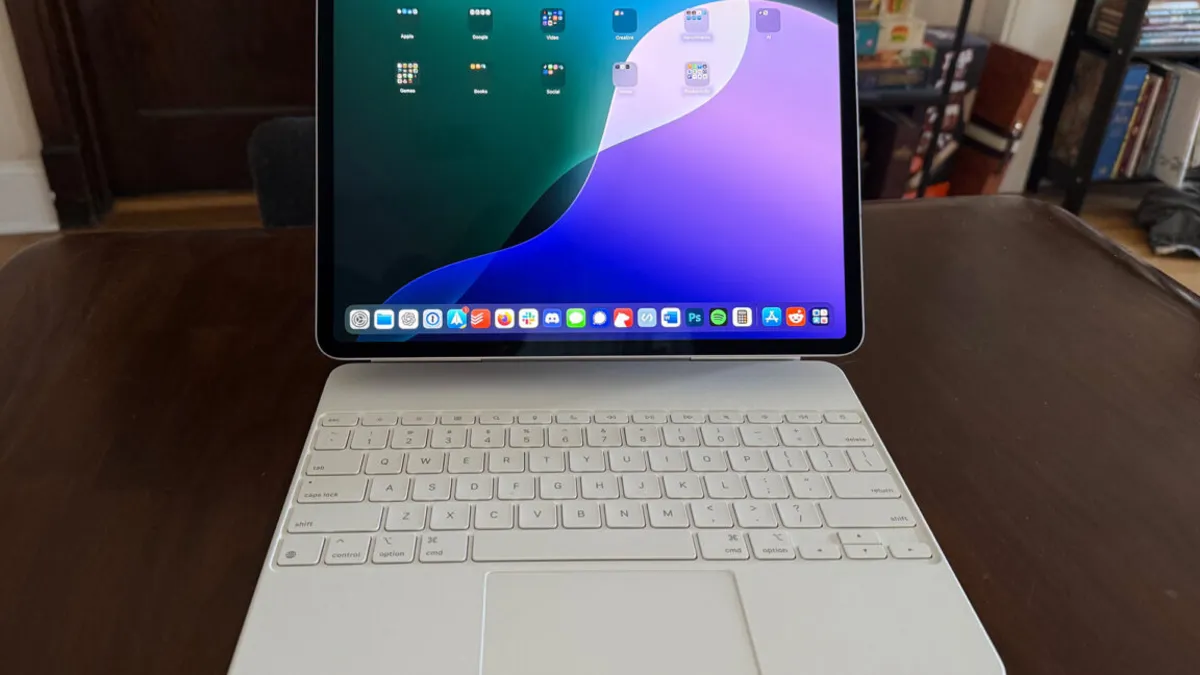
Apple has recently unveiled its latest refresh of the iPad Air, but there's not much new to discuss. The updated model is largely identical to its predecessor, with only a couple of notable changes. These include an upgrade from the M2 chip to the slightly faster M3 chip and a redesign of the Magic Keyboard peripheral. For a more comprehensive review of the previous generation, you may want to refer to our M2 iPad Air review from last year, as much of that information remains applicable.
The new M3 chip features an 8-core CPU, which includes four performance cores and four efficiency cores. On the graphical front, it boasts nine GPU cores and a 16-core Neural Engine. We've seen the M3 chip in other Apple devices, and its performance in the iPad Air is consistent with Geekbench benchmark results. Users transitioning from the M1 or older A-series chips will certainly notice substantial gains, while the upgrade from M2 to M3 may feel more incremental for existing iPad Air users.
For gamers and professionals using demanding applications, the M3 chip will provide a noticeable boost. Titles like Assassin’s Creed Mirage, Resident Evil Village, Infinity Nikki, and Genshin Impact will benefit from the enhanced performance. Additionally, heavy-duty applications such as CAD and video editing software will see improvements as well. However, for most of the iPad Air’s target audience, these performance upgrades may go unnoticed. The real advantage of the M3 chip lies in its support for specific features, including hardware-accelerated ray tracing and AV1 video codec support.
Moreover, the M3 chip supports Apple Intelligence, the company’s suite of generative AI features. While still evolving, these features are becoming more prevalent across Apple’s product lineup, with only the entry-level iPad lacking this support. This integration simplifies Apple’s marketing strategy and suggests that these AI features may become increasingly useful in the near future. While the M3 does not represent a radical departure from the previous model, it offers enough improvements to impress newcomers coming from older iPads or nearly any Android tablet.
The refreshed Magic Keyboard for the iPad Air has received some notable updates. It is now lighter and includes a new row of function keys that allows for quick adjustments to volume, brightness, and media playback. This feature was well-received in the Magic Keyboard for the iPad Pro, and its introduction to the iPad Air is equally exciting. The new design strikes a balance between the old version and the Pro model. While it lacks the backlighting and haptic feedback found in the Pro version, it offers these essential function keys.
Price-wise, the new Magic Keyboard is slightly more affordable, retailing at $269 compared to the previous model's $299. While still considered pricey in comparison to non-Apple alternatives, this price reduction is a welcomed change. Apple has also decided to maintain support for the previous Magic Keyboard, allowing users upgrading from the last generation to avoid additional costs unless they find the new features worth the investment.
In terms of typing experience, the new Magic Keyboard offers significant advantages over other tablet options, though it cannot fully replicate the sensation of a high-end laptop keyboard or satisfy those who prefer mechanical keyboards. The trackpad has also been enlarged, contributing to a better user experience. Overall, the new Magic Keyboard presents several thoughtful enhancements along with a slight price decrease.
By making minimal changes in a market that is not rapidly evolving, the updated iPad Air—starting at $599 for the 11-inch model and $799 for the 13-inch—remains the best choice for most users looking for a reliable tablet. It delivers ample performance for everyday tasks, features a quality LCD screen, and the new Magic Keyboard introduces several functional improvements while costing slightly less than its predecessor.
For those seeking a budget-friendly tablet for children or light applications, the base iPad, priced at $349, remains a more suitable option. Conversely, the iPad Pro, which starts at $999 for the 11-inch model and $1,299 for the 13-inch version, offers a more robust experience but may exceed the needs of most users. While there are still areas for improvement in the iPad's software, the current refresh is satisfactory in a mature market, despite its relatively high price tag.